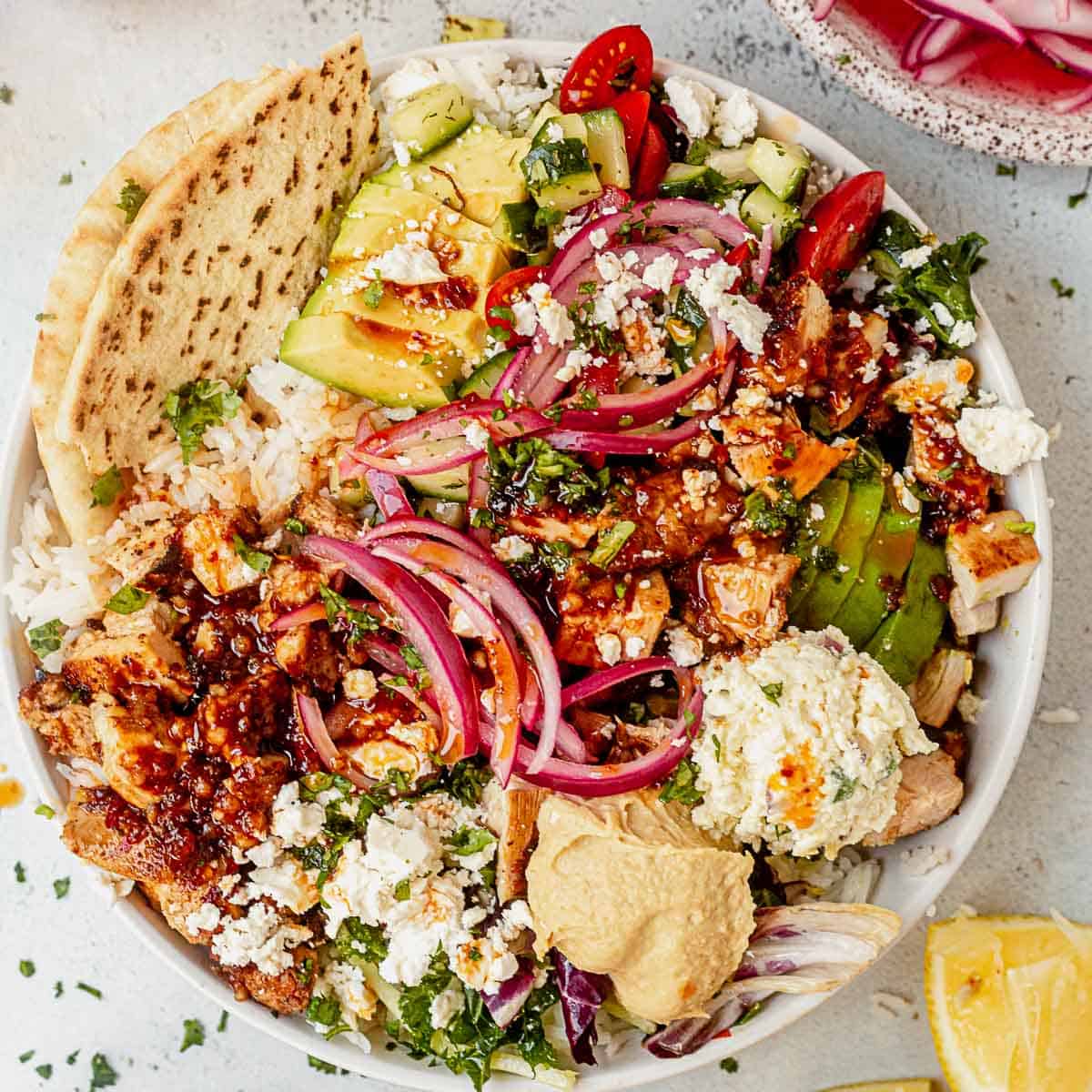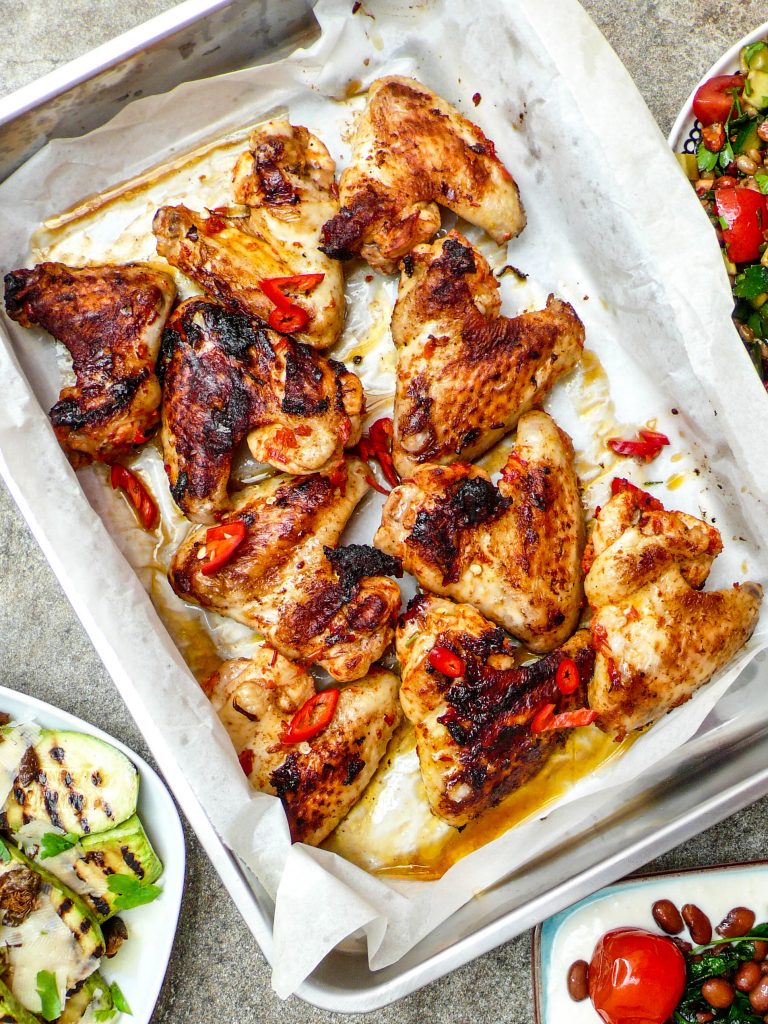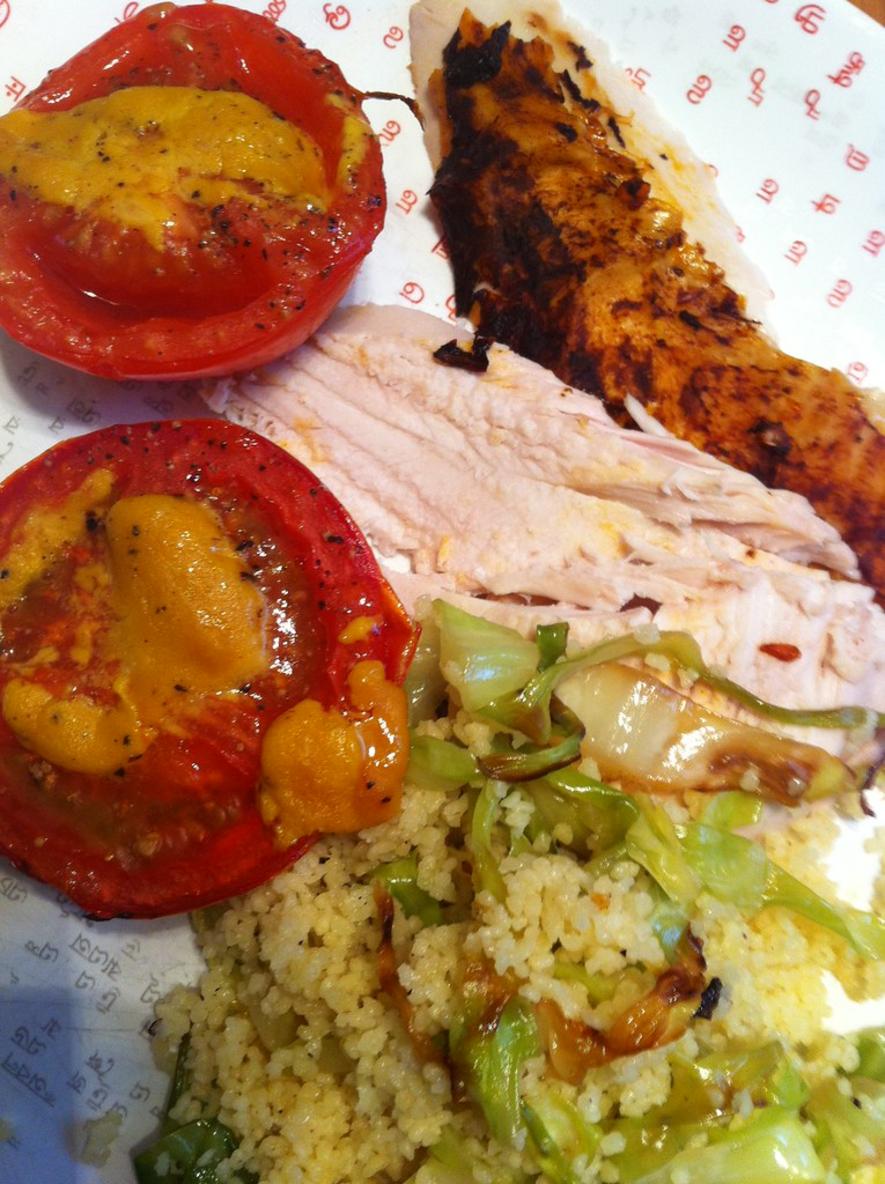Introduction to the Recipe
Harissa chicken is a vibrant and deeply flavorful dish that transports you straight to the bustling markets and aromatic kitchens of Morocco. This particular recipe takes full advantage of the complex, slightly spicy, and wonderfully fragrant paste, a cornerstone of Moroccan cuisine. Traditionally, harissa is a communal experience – a shared bowl of richly spiced paste, dipped into warm pita bread, and enjoyed with family and friends. But this simplified version allows you to experience that intense flavour profile in the comfort of your own home. The key to a truly exceptional harissa chicken lies in the quality of your harissa – a good harissa will have a deep, smoky flavour, with hints of roasted peppers, garlic, and spices. We’ve used a carefully selected version here, which is perfectly balanced and packs a delicious punch. Beyond the harissa, this recipe also incorporates a touch of lemon, garlic, and a generous helping of olive oil, all working in harmony to create a luscious and incredibly satisfying meal. Don’t be intimidated by the name; this dish is surprisingly straightforward to prepare, and the results are undeniably impressive. It’s a fantastic option for a weeknight dinner, showcasing bold flavours and creating a truly memorable culinary experience. This isn’t just chicken; it’s a journey for your palate. delicious recipes is a good place to start if you would like to delve deeper into the versatility of this ingredient. Moroccan food offers further information regarding the cultural significance of harissa. This recipe is perfect for those seeking a taste of adventure – a delightful fusion of flavours and aromas. It’s an ideal recipe for impressing guests or simply treating yourself to something special. Preparing this dish is a fantastic way to bring a little bit of Morocco into your kitchen. home cooking provides a great framework for understanding more about this type of cooking.
Ingredients Checklist
To create a truly authentic and deeply flavorful Moroccan-inspired Harissa Chicken, gathering the right ingredients is paramount. Here’s a comprehensive list, allowing you to adjust quantities to your personal preference and desired spice level:
- Chicken: 1.5 – 2.5 lbs Bone-in, Skin-on Chicken Pieces (Thighs and Drumsticks are recommended for maximum flavor and moisture, but breasts can be used – just be careful not to overcook).
- Harissa Paste: 2-4 tablespoons (Start with 2 and adjust to your spice tolerance. Harissa paste varies greatly in heat level, so small adjustments are key. You can find it in the ethnic aisle of most grocery stores, or specialty markets. Some commercially prepared harissa pastes also come with smoked paprika for extra depth.
- Olive Oil: 3-4 tablespoons – Extra Virgin Olive Oil is best for its flavor.
- Onion: 1 large Yellow Onion, finely chopped – This forms the aromatic base of the dish.
- Garlic: 4-6 cloves, minced – Freshly minced garlic is essential for pungent flavor.
- Lemon: 1-2 lemons – Juice of one, zest of the other, for bright acidity and aroma. Zest adds a concentrated citrus punch.
- Chicken Broth: 1 – 1.5 cups – Low Sodium is preferred, allowing you to control the salt level.
- Cumin: 1-2 teaspoons – Ground cumin provides the signature earthy spice.
- Coriander: 1-2 teaspoons – Ground coriander adds a citrusy, slightly sweet note.
- Paprika: 1-2 teaspoons – Smoked paprika is highly recommended, but sweet paprika will also work to add a subtle sweetness.
- Cayenne Pepper: 1/4 – 1/2 teaspoon (optional) – For an extra kick of heat – adjust to your preference.
- Salt: 1 – 1.5 teaspoons – To taste – remember that harissa paste can already be salty.
- Black Pepper: 1/2 – 1 teaspoon – Freshly ground black pepper is always best.
- Fresh Parsley: 1/4 cup, chopped – For garnish and a fresh, herbaceous element. Cilantro can be used instead, but parsley is more traditional in Moroccan cuisine.
- Rice (for serving – optional): 1 cup Basmati or Jasmine rice – For a complete meal, consider serving over fluffy rice.
Note: The quantities above are approximate and can be adjusted based on your personal preferences and the size of the chicken pieces. Don’t hesitate to experiment and find what works best for you. Remember that quality ingredients significantly impact the final flavor, so choose the best you can find.
Step-by-Step Cooking Instructions
To create a truly exceptional and authentically spiced Harissa Chicken dish, follow these detailed instructions. Preparation is key, so let’s begin!
1. Preparing the Chicken: The foundation of any great dish is properly prepared ingredients. Start by taking your whole chicken – ideally, a 3-4 pounder – and carefully remove the backbone using a sharp knife or poultry shears. This process, known as ‘spatchcocking’ or butterflying, is crucial for ensuring even cooking and a beautifully crispy skin. You can either discard the backbone or save it to create a flavorful chicken stock later – it’s a fantastic way to make the most of your ingredients. Place the chicken breast-side down on a cutting board.
2. Building the Flavor Base: Once the backbone is removed, generously season the entire chicken with kosher salt and freshly ground black pepper. Don’t be shy – a good amount of seasoning is essential to build depth of flavor. The Harissa paste is the star of the show, so we’ll add it next. For a truly rich and complex flavour, make sure to get a good quality harissa paste – you can often find this at specialist ethnic food markets, Moroccan food shops or even well-stocked supermarkets.
3. Incorporating the Harissa: Now it’s time to unleash the flavour! In a small bowl, combine your Harissa paste with 2 tablespoons of olive oil. The olive oil helps to emulsify the paste and ensures it evenly coats the chicken. Start with approximately 2-3 tablespoons of Harissa paste – you can always add more later to adjust the spice level to your preference. Harissa pastes vary significantly in heat, so start with less and adjust as you go. Remember, it’s easier to add spice than to take it away. Massage the Harissa mixture thoroughly over the entire surface of the chicken, including under the skin where possible. This really helps infuse the flavour deep into the meat. Try to get it really embedded in the muscle fibers to maximize the effect.
4. Baking the Chicken: Preheat your oven to 425°F (220°C). Place the spatchcocked chicken on a roasting rack set inside a rimmed baking sheet. This allows air to circulate around the chicken, promoting even cooking and crispy skin. Roast the chicken for 60-75 minutes, or until a meat thermometer inserted into the thickest part of the thigh registers 165°F (74°C). For the last 15-20 minutes, you can increase the oven temperature to 450°F (232°C) to achieve maximum crispness on the skin. Check the chicken regularly during the last half of the cooking time to prevent over-browning.
5. Resting and Serving: Once the internal temperature reaches 165°F (74°C), remove the chicken from the oven and transfer it to a cutting board. Tent it loosely with foil and let it rest for at least 10-15 minutes before carving. This is a crucial step – resting allows the juices to redistribute throughout the meat, resulting in a more tender and flavourful chicken. Carve against the grain and serve immediately. Accompany with couscous, rice pilaf, or a fresh salad for a complete and satisfying meal. Consider a dollop of plain yogurt or a squeeze of lemon juice to balance the spice.
Tips & Notes for Perfect Harissa Chicken
Harissa, at its core, is a vibrant and intensely flavorful chili paste originating from Morocco, and it’s what truly elevates this chicken to a phenomenal dish. Understanding how to best utilize it – and its spice level – is key to achieving a truly authentic and delicious result. Let’s delve into some crucial tips and notes.
Understanding the Spice: Harissa can vary dramatically in heat. Some batches are incredibly fiery, while others are milder. Always start with a smaller amount and taste as you go, adding more until you reach your desired spice level. It’s far easier to add more than to try and remove the heat after it’s already been incorporated. Consider this a critical step; a little goes a long way, and it’s better to be pleasantly warm than overwhelmed with intense spice.
Marinating is Your Friend: Don’t just rub the harissa on the chicken. The longer you marinate, the deeper the flavour will penetrate the meat. Ideally, marinate for at least 30 minutes, but 2-4 hours in the refrigerator will yield significantly richer results. The acid in the harissa helps to tenderize the chicken as it sits.
Adding Fat for Flavor and Moisture: Harissa, particularly if homemade, can be quite dry. To combat this, consider adding a tablespoon or two of olive oil to the marinade. This not only helps distribute the harissa evenly but also helps keep the chicken moist during roasting. A touch of yogurt or buttermilk (about 1/4 cup) can also be incorporated – these acidic ingredients also contribute to tenderizing and add a subtle tang that complements the spice beautifully.
Don’t Overcook: Harissa chicken is fantastic when it’s juicy and tender, not dry and stringy. Keep a close eye on the internal temperature and remove the chicken as soon as it reaches 165°F (74°C). Overcooking will quickly dry it out, diminishing the wonderful flavours. Using a reliable meat thermometer is highly recommended for accurate results. Resting the chicken for 10-15 minutes after cooking, loosely tented with foil, allows the juices to redistribute, ensuring maximum tenderness.
Variations & Additions: While this recipe focuses on the traditional harissa flavor, feel free to customize it! Adding a squeeze of lemon juice or a dash of smoked paprika can add exciting layers of complexity. A few chopped fresh herbs, like cilantro or parsley, added at the very end, provides a fresh, vibrant counterpoint to the heat.
Finding the Right Harissa: As mentioned earlier, harissa quality varies greatly. If you’re struggling to find a good quality one, consider making your own. There are countless recipes online, allowing you to tailor the spice level to your preference. Look for harissa pastes that feature a good balance of chili peppers, garlic, spices like cumin and coriander, and often preserved lemons or other citrus for a truly authentic Moroccan flavor. You can buy pre-made harissa paste online or in specialty stores, but crafting your own guarantees you the freshest and most impactful taste. Don’t be afraid to experiment! Adding ingredients like a few tablespoons of tomato paste can deepen the colour and add another layer of flavour. For a touch of sweetness, a small amount of honey can balance the heat wonderfully. Finally, if you’re concerned about a particularly spicy batch, blending a small amount of yogurt with the harissa before applying to the chicken can mellow the heat significantly – again, taste and adjust as needed. Remember, the key to delicious harissa chicken lies in skillful layering of flavors and careful attention to detail. Enjoy the process!
Nutritional Information & Facts
This recipe, a vibrant and intensely flavorful take on Moroccan-inspired chicken, offers a surprisingly nutritious meal. Let’s break down the approximate nutritional details per serving (based on the provided values and a serving size of roughly 6 ounces, or 170 grams of cooked chicken). It’s crucial to remember that these are estimates, and actual values can vary significantly depending on specific ingredients used – the exact type and brand of harissa paste, for example, can drastically impact the chili content. Additionally, variations in cooking methods and portion sizes will also influence the final nutritional breakdown. However, this provides a helpful general guideline.
Calories: Approximately 251kcal (13%) – This calorie count is largely driven by the oil used in the marinade and the moderate amount of fat content, primarily from the chicken itself. It represents a reasonably lean protein source.
Carbohydrates: 41g (14%) – The carbohydrates come primarily from the chicken (which contains glycogen) and any accompanying vegetables used in the cooking process. Harissa paste itself contributes negligibly to the carbohydrate count.
Protein: 7g (14%) – Chicken is a fantastic source of protein, essential for muscle repair, growth, and overall body maintenance. This contribution represents roughly 14% of the total nutritional profile – a substantial protein boost in every serving.
Fat: 7g (11%) – The fat content is mainly due to the olive oil used to create the marinade, which is a source of healthy monounsaturated fats. While this contributes to the overall caloric value, it’s a beneficial fat source, particularly when opting for extra virgin olive oil.
Saturated Fat: 1g (6%) – This figure reflects the inherent fat composition of the chicken. Maintaining a lower intake of saturated fats is generally recommended for cardiovascular health.
Sodium: 709mg (31%) – The high sodium content is primarily attributed to the harissa paste, which is frequently seasoned with salt. Harissa pastes can vary greatly in sodium levels, so careful selection or adjusting the quantity used is advisable, especially for those monitoring their sodium intake.
Potassium: 1144mg (33%) – Chicken is a good source of potassium, a vital electrolyte that plays a critical role in maintaining healthy blood pressure and nerve function. This figure highlights the chicken’s contribution to the daily potassium needs.
Fiber: 8g (33%) – The fiber content stems from any vegetables integrated into the dish. Including ingredients like bell peppers or onions significantly boosts the fiber content, promoting digestive health and satiety.
Sugar: 5g (6%) – This value reflects the natural sugars present in the chicken and any accompanying vegetables. It’s worth noting that adding sweetness (if desired) would, of course, elevate this value considerably.
Vitamin A: 70IU (1%) – Chicken provides a small amount of Vitamin A, an essential nutrient crucial for vision and immune function.
Vitamin C: 35.4mg (43%) – Chicken is a source of Vitamin C, an antioxidant that supports immune function and collagen synthesis. The level of Vitamin C retained in the chicken during cooking can be influenced by cooking methods – steaming or poaching retains more than frying.
Calcium: 114mg (11%) – Chicken contributes a moderate amount of calcium, an essential mineral for bone health and various bodily functions.
Iron: 8.2mg (46%) – Chicken provides a respectable amount of iron, a vital mineral involved in oxygen transport within the bloodstream.
Disclaimer: These nutritional values are estimates and intended for informational purposes only. For precise figures, please consult a registered dietitian or utilize a nutrition analysis tool that takes into account the specific ingredients and quantities you’ve used. Always consider individual dietary needs and consult with a healthcare professional before making significant changes to your diet.
Author Bio & Recipe Source
Joanna Cismaru is a passionate food writer and recipe developer behind Craving Homecooked, a blog dedicated to sharing approachable, flavorful recipes with a focus on global influences. With a deep love for exploring diverse cuisines, Joanna meticulously researches ingredients and techniques, striving to create dishes that are both delicious and easy to prepare for home cooks of all levels. Her background in culinary arts and years of experience experimenting in the kitchen have shaped her commitment to clear instructions, helpful tips, and beautiful photography – all designed to inspire confidence and joy in the kitchen. She believes that cooking should be a celebration of flavors and a connection to cultural traditions, and she’s thrilled to share her culinary adventures with you. Joanna’s recipes are often influenced by her travels and her appreciation for authentic ingredients. This particular dish, the Harissa Chicken, is a modern interpretation of a traditional Moroccan flavor profile, meticulously developed to offer a balanced heat level while maximizing the fragrant complexity of harissa paste. The foundation of the recipe stems from years of researching traditional Moroccan stews and tagines, adapting it for a quicker weeknight meal without sacrificing the authentic taste. The idea for this recipe evolved from a trip to North Africa, specifically the coastal region of Morocco, where the use of spices like cumin, coriander, and chili peppers is deeply ingrained in their culinary heritage. Joanna consulted with several local cooks during her travels, learning about the nuances of harissa preparation—the careful blending of spices, the use of smoked paprika, and the importance of balancing heat with fresh herbs. It is important to note that harissa paste is a cornerstone of Moroccan cuisine, and its authenticity relies on the quality of the spices used. The detailed instructions are designed to guide the reader through the process of achieving that perfect balance. Ultimately, this Harissa Chicken recipe represents Joanna’s dedication to translating exciting culinary experiences into a simple, satisfying dish you can create in your own kitchen. She hopes you’ll enjoy this vibrant and flavorful rendition of a classic, and that it inspires you to explore the wonderful world of Moroccan cooking. Joanna Cismaru
 ,
, ,
, ,
,
